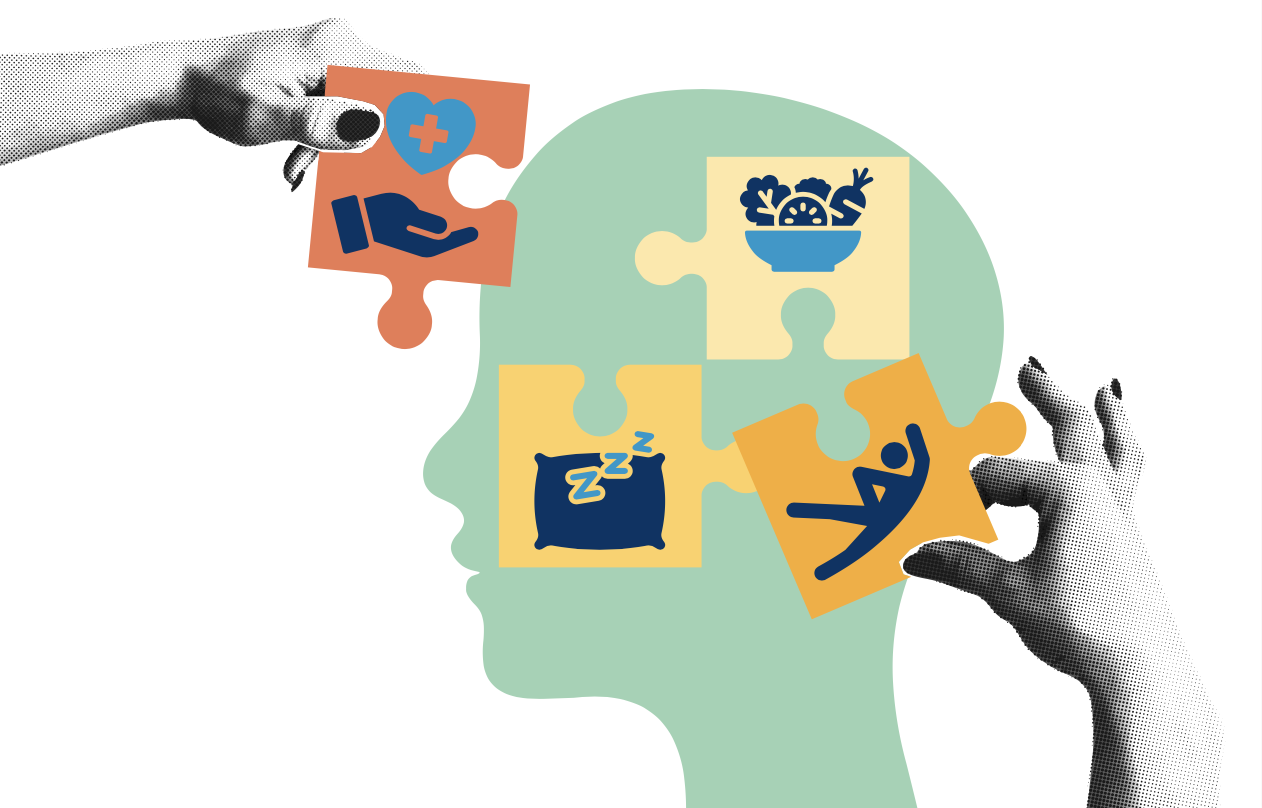Damien O’Brien MPSI outlines the basics of pain management, as well as the important role of the pharmacist
Introduction
Pain is an unpleasant sensory and emotional experience that affects individuals of all ages. It is associated with actual or potential tissue damage and is subjective, varying from person-to-person. Pain acts as a protective mechanism, alerting the body to injury or illness. It is one of the most common symptomatic complaints in medicine and a leading reason for emergency room visits.
Pain is classified based on duration: Pain lasting less than three months is considered acute, while pain persisting for more than three months is classified as chronic. Acute pain may serve as a warning, prompting an individual to withdraw from a dangerous situation. Acute pain typically has a sudden onset, often resulting from injury, surgery, or inflammation. It usually resolves as the underlying cause heals. Chronic pain, however, can significantly reduce a person’s quality of life, and often requires long-term management strategies.1,2
Effective pain management is essential for treating both acute and chronic pain. It requires a multidisciplinary approach, incorporating pharmacological treatments, non-pharmacological interventions, and patient education. This article explores pain management from a pharmacist’s perspective, covering the mechanisms of pain, the World Health Organisation (WHO) analgesic ladder, pharmacological treatment options, non-pharmacological treatment options, and the crucial role pharmacists play in improving patient outcomes.2,3
Mechanism of pain
Pain is a complex physiological and neurological process involving the central and peripheral nervous systems. It is typically classified as nociceptive pain or neuropathic pain, each with distinct underlying mechanisms. Transduction is the first stage of the nociceptive pain pathway, where nociceptors (pain receptors) in the skin, muscles, joints, or organs detect a harmful stimulus, which may be mechanical, thermal, or chemical damage.
Tissue damage triggers the release of pro-inflammatory mediators such as prostaglandins, histamine, and substance P. Nerve fibres transmit pain signals from the nociceptors to the spinal cord, where the signal is processed. In response, the brainstem releases neurotransmitters such as endorphins, serotonin, and noradrenaline to modulate pain perception. The signals then reach the brain, where they are interpreted as pain.
Somatic pain results from the activation of nociceptors in superficial or deep tissues. Superficial somatic pain arises from nociceptor stimulation in the skin or other superficial tissues, whereas deep somatic pain originates from nociceptors in bones, ligaments, tendons, blood vessels, and muscles. Visceral pain, on the other hand, originates from internal organs. It is often widespread and difficult to localise, as visceral nociceptors are not as precisely mapped as somatic ones.1,2
Neuropathic pain results from damage to the nervous system rather than direct tissue injury. It is commonly associated with conditions such as diabetes mellitus, shingles, multiple sclerosis, or nerve compression. This type of pain is often due to nerve fibre damage, leading to increased neuronal firing, as well as changes in nerve conduction and neurotransmitter properties. Unlike nociceptive pain, neuropathic pain is generally not well controlled with standard analgesics and often requires medications that modulate nerve activity.1,2
WHO analgesic ladder
The WHO analgesic ladder provides a stepwise approach to pain management, primarily used in cancer pain, but now also applicable for both acute and chronic pain caused by a wide array of conditions. There are some drawbacks to the WHO analgesic ladder, but it provides a structured approach to pain management in up to 80 per cent of patients.
Step 1. Mild pain: Non-opioid analgesics, such as paracetamol or nonsteroidal anti-inflammatory drugs (NSAIDs), with or without adjuvants.
Step 2. Moderate pain: Weak opioids (codeine, tramadol), with or without non-opioid analgesics and with or without adjuvants.
Step 3. Severe pain: Strong opioids (morphine, oxycodone, fentanyl), with or without non-opioid analgesics and with or without adjuvants.
Adjuvants refer to a group of drugs that belong to various classes. Although these drugs may be indicated for conditions other than pain, they can be helpful in treating certain pain conditions. Antidepressants, anticonvulsants, and corticosteroids are examples of drug classes that may be used as adjuvants. Furthermore, they may be indicated as a first-line treatment option in certain pain conditions, particularly neuropathic pain.3
The main principles of the analgesic ladder are “by the clock, by the mouth, by the ladder”. This means that analgesics should be taken at regular intervals, orally whenever possible, and initiated at Step 1 and titrated upward as required. Each patient should undergo a clinical examination, with a treatment regimen individualised and adjusted according to patient response. Adherence to medication is important to prevent reoccurrence of pain. One drawback associated with the analgesic ladder is that it does not include non-pharmacological treatment options. Furthermore, it can lead to a false belief that NSAIDs and opioids are safe treatment options simply because they are on Step 1 and Step 2 of the ladder, which is not always the case.3
Treatment
Effective pain management is essential to improve quality of life and restore function in patients experiencing acute or chronic pain. Treatment approaches can be categorised into pharmacological and non-pharmacological options. Pharmacological treatments include paracetamol, NSAIDs, opioids, and adjuvant medications, while non- pharmacological treatment options can reduce pain perception and
enhance overall wellbeing. The main objectives of pain management are to reduce discomfort, improve physical function, minimise adverse effects, and improve quality of life. A combination of pharmacological and non- pharmacological strategies may be the most effective method to achieve optimal pain control while minimising the risks associated with medication overuse.3
Pharmacological treatment
Paracetamol
Paracetamol is one of the most commonly used analgesics for mild- to-moderate pain. It may also be used as an adjunct therapy in treating moderate-to-severe pain. Paracetamol may also be used for the temporary reduction of fever, but it is not effective in neuropathic pain. It is commonly used for headaches, musculoskeletal pain, osteoarthritis, and post-operative pain. It works primarily by inhibiting cyclooxygenase (COX) enzymes in the central nervous system (CNS), specifically COX-3, although the exact mechanism of action remains unclear. Unlike NSAIDs, it has minimal anti- inflammatory effects. The maximum
The main principles
of the analgesic ladder are ‘by the clock, by the mouth, by the ladder’
recommended dose of paracetamol for adults (aged 12 years and older) is 1g every four-to-six hours, up to a maximum of 4g per day. In children, a weight-based dosing approach is more appropriate, with 15mg/kg per dose recommended. It is available in oral, intravenous, and rectal formulations. Paracetamol is generally safe when used correctly, with a favourable adverse effect profile. The main concern with paracetamol is hepatotoxicity, particularly in overdose or individuals with pre-existing liver disease.2
NSAIDs
NSAIDs are commonly used to treat inflammatory pain due to their anti- inflammatory and analgesic effects. They are indicated in the treatment of conditions such as osteoarthritis, rheumatoid arthritis, musculoskeletal pain, dysmenorrhea, post-operative pain, and fever. They exert their mechanism of action by inhibiting COX-1 and COX-2 enzymes, thereby reducing prostaglandin synthesis and reducing inflammation. Common NSAIDs available without a prescription include ibuprofen and aspirin, while diclofenac, naproxen, dexketoprofen, celecoxib, and etoricoxib are available with prescription. NSAIDs may be administered orally, topically, rectally, or intravenously. Topical formulations are effective for localised musculoskeletal pain while reducing systemic adverse effects. The main adverse effects of NSAIDs include gastrointestinal problems (ulcers, gastritis, bleeding), cardiovascular risks (increased blood pressure, myocardial infarction, stroke), and renal toxicity (acute kidney injury, electrolyte imbalances). Proton pump inhibitors may be used to reduce gastrointestinal risks. Due to the risk of adverse effects, the lowest effective dose should be used for the shortest duration possible.2
Opioids
Opioids may be used in the treatment of moderate-to-severe pain. They work by binding to opioid receptors, inhibiting pain transmission by reducing neurotransmitter release. Opioids may be classified based on their potency and duration of action.
Weak opioids, such as codeine and tramadol, may be used for mild-to- moderate pain. Potent opioids, such as morphine and oxycodone, may be used for severe pain, including post-surgery, cancer pain, and palliative care pain. Short-acting opioids, in immediate-release preparations, provide rapid pain relief and may be used for breakthrough pain, whereas long-acting opioids, in extended- release preparations, may be used for chronic pain management.
Opioids are available in oral, intravenous, intramuscular, subcutaneous, transdermal, and epidural formulations. Adverse effects of opioids include respiratory depression, constipation, nausea, vomiting, sedation, and dependency. Opioid-induced constipation is very common; therefore, laxatives may be co-administered to prevent it. Tolerance and physical dependence can develop with long-term opioid use, which requires careful monitoring and dose adjustments. Opioids should only be used when the expected benefits for both pain relief and function outweigh the risks of addiction, tolerance, and adverse effects.2
Antidepressants
Certain antidepressants, particularly tricyclic antidepressants (TCAs) and serotonin-noradrenaline reuptake inhibitors (SNRIs), are effective for neuropathic pain. Amitriptyline and nortriptyline are examples of TCAs, while duloxetine and venlafaxine are examples of SNRIs used to treat neuropathic pain. They work by enhancing serotonin and noradrenaline levels, which modulate pain perception in the CNS. Furthermore, they may be used for other conditions, including fibromyalgia and chronic musculoskeletal pain, while amitriptyline is often used prophylactically in treating migraine and headache. They are particularly useful if depression or anxiety is a comorbidity. These drugs are administered orally and are typically taken at night due to their sedative effects. Common adverse effects include nausea, vomiting, drowsiness, dry mouth, dizziness, weight gain, decreased libido, and orthostatic hypotension. TCAs have cardiac risks and should be avoided in patients with pre-existing heart conditions. Patients should be monitored for signs of serotonin syndrome, particularly when other serotonergic drugs are co-administered.2
Anticonvulsants
Anticonvulsant medications, such as gabapentin and pregabalin, are widely used for neuropathic pain conditions, including diabetic neuropathy and postherpetic neuralgia. They work by reducing the calcium-dependent release of excitatory neurotransmitters, which decreases neuronal excitability and abnormal pain signalling. They are administered orally. Common adverse effects include dizziness, blurred vision, nausea, headache, confusion, and depression. Gradual dose titration helps minimise adverse effects such as dizziness and sedation.2
Non-pharmacological management
There are several non-pharmacological treatment options that can be effective in relieving pain. These treatment options can be used alone or combined with pharmacological treatment to form a multi- modal approach. Non-pharmacological options often have a favourable adverse effect profile when practiced correctly.
Physiotherapy plays an important role in reducing pain and improving function, while also addressing biomechanical issues that contribute towards chronic pain. Heat and cold therapy may be useful in reducing inflammation in acute injury. Acupuncture and exercise are other non-pharmacological methods
that can provide pain relief for patients. These methods are generally safe when performed by an appropriately trained professional; however, there is a risk of injury with improper use, as well as a risk of infection at the site of administration with acupuncture.
Cognitive behavioural therapy may also have a role in treating patients with chronic pain, particularly as an adjunct to other therapies. Non-pharmacological strategies may also reduce anxiety associated with pain and lower the dosage of analgesic drugs needed, thereby reducing adverse effects and minimising risk.4
Role of the pharmacist in pain management
Pharmacists play an important role in pain management, ensuring safe and effective treatment while minimising treatment risks. As accessible healthcare professionals, pharmacists play a
critical role in medication review and optimisation, ensuring the appropriate use of analgesics while preventing interactions and adverse effects. They can also educate patients on proper medication use and the importance of adherence, while also advising on non-pharmacological treatment options. Pharmacists can assess pain control and adverse effects, advising on therapy adjustment if necessary. Finally, pharmacists collaborate with other healthcare professionals to improve patient outcomes and quality of life.
References
1. Chen J and Sehdev JS. (2023). Physiology, Pain. [online] PubMed.
2. Queremel Milani DA and Davis DD. (2023). Pain management medications. [online] PubMed.
3. Anekar AA, Cascella M, and Hendrix JM. (2023). WHO analgesic ladder. [online] National Library of Medicine.
4. Dydyk AM and Conermann T. (2024). Chronic pain. [online] PubMed.







